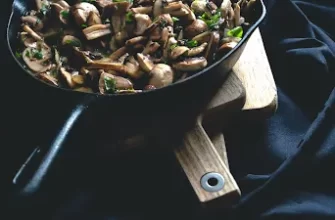- Introduction to Exploring the French Cuisine: A Guide to Cooking with Nuts
- The Benefits of Cooking with Nuts in French Cuisine
- Step-by-Step Guide to Preparing Nuts for Use in French Recipes
- Frequently Asked Questions About Cooking With Nuts in French Cuisine
- Top Five Facts About Cooking with Nuts in French Cuisine
Introduction to Exploring the French Cuisine: A Guide to Cooking with Nuts
Although the French cuisine is known for its many delicacies, one of the most overlooked ingredients is nuts. These simple and humble culinary staples can add a lot of depth, flavour, and texture to traditional French dishes. In this post we’ll look at some different ways to use nuts in your next French cooking project.
Nuts have been used in French cooking for centuries and are still highly valued today. From walnuts roasted in butter to top salads to hazelnuts creating decadent creams for pastries, there are countless uses for these crunchy little treats. Their nutritional value adds to their appeal: most nuts provide essential fatty acids, such as omega-3s, fiber, and protein needed for energy throughout day.
One of the simplest ways to prepare nutty flavors is through roasting—an inexpensive way to bring out flavor and crunchiness. Hazelnuts especially benefit from roasting as it brings out their distinctive aroma and enhances their sweet taste when combined with other seasonings or spices like cloves or cinnamon. They can be served as part of an entrée or as an accompaniment alongside vegetables or fish. If you’re looking for something sweeter, almonds make an excellent base for almond buttercream perfect for tarts or cakes—the perfect way to turn a classic dessert into something extraordinary! Hazelnut meringues will also add sweetness while providing a wonderful contrast between crispness and creaminess that enriches every bite.
Adding crushed nuts on top of food offers added texture plus extra nutrition; try using them on grilled fish or poultry dishes instead of breadcrumbs. This will up the protein content without adding calories—a win-win situation by any standards! Working with raw nuts requires precision because they can easily become bitter if overheated; stirring frequently during preparation is key here so that all surfaces receive equal heat exposure before finally being blended with other ingredients like milk or eggs before baking into delicious treats like mac
The Benefits of Cooking with Nuts in French Cuisine
Nuts have long been a major part of French cuisine. Not only do they add texture and intrigue, but they can also provide an array of health benefits. From bringing out the flavor in savory dishes to providing added crunch in desserts, there are many reasons to explore the possibilities that cooking with nuts can provide in French cuisine.
For starters, nuts offer a vast array of health benefits when incorporated into your meals. Studies have found that regular consumption of nuts can reduce the risk for type II diabetes and coronary heart disease, as well as keep cholesterol levels under control. By adding a few tablespoons or so to your meal all at once or over time throughout preparation, you’ll be getting essential vitamins, minerals, fiber and healthy fats that will both improve your immune system functioning and help maintain weight-loss goals.
Additionally, nuts introduce an interesting layer of texture and flavor when cooked with French ingredients like garlic and herbs such as rosemary or thyme. This gives dishes a more complex taste with greater depth than simply relying on sauces alone to carry the flavor profile – something often desired by even the most amateur cook’s palate! For instance sizzling slivered almonds atop roasted vegetables brings out a nutty warmth while walnuts sprinkled into baked goods enhance sweetness without using much sugar at all. Nuts also provide more protein than grains making them better substitution where vegetarianism is observed; confirming why this hearty foodstuff continues to be popular throughout France today!
Finally what makes cooking with nuts even better is their versatility: certain varieties like pistachio’s or hazelnut can easily overpower other elements so use them sparingly for best results; consider grinding up pine nuts for cheesy bites on pizza solace salads instead! Other times it may just take sprinkling coarsely chopped walnuts over ice cream served fruit salad get from mild nuttiness everyone loves These are just some ideas which show why recipes incorporating these tasty little morsels remain as timeless traditional fare generations…and
Step-by-Step Guide to Preparing Nuts for Use in French Recipes
1. Gather the necessary supplies: a cutting board, a sharp knife, and a bowl or container to contain any discarded pieces. Depending on the recipe, you may need to gather specific types of nuts such as walnuts, pecans, almonds etc.
2. Separate any clumps of nuts which may exist in the package prior to beginning preparation of use.
3. Place nuts onto the cutting board in an even layer making sure that none are overlapping one another for thorough preparation.
4. Slice off any imperfections from individual nuts if necessary and discard those into the container before usage can begin.
5. Peel off any papery protective outer husks contained on some nuts–usually found on fresh walnuts–and discard them into the same container as above.
6. Carefully take up each nut and using your knife cut away any hard inner shells or skin still attached to further prepare them for cooking applications within French recipes.(This step may not be required for all recipes but often it is).
7. Once finally prepared to your desired outcome either transfer them directly into designated recipes for use OR place into an appropriate storage container until ready for later use in upcoming meals or dishes as desired!
Frequently Asked Questions About Cooking With Nuts in French Cuisine
Q: What types of nuts are commonly used in French cuisine?
A: Nuts are widely used in French cuisine to add texture and flavor to many dishes. The most popular nuts found in French cooking are walnuts, almonds, chestnuts, hazelnuts, pistachios, pecans, macadamias and pine nuts. They can be finely chopped and added to a dish or used as a garnish.
Q: How can I use nuts to make a savory French dish?
A: There are many different ways that you can enjoy nuts in your French cooking. For example, you could try making nut-crusted pork chops. Simply dip the pork chops into beaten egg whites before rolling them into crushed walnuts or almonds. Alternatively, you could also create a delicious vegetarian tart by mixing pine nuts and Parmesan cheese with basil pesto for the filling.
Q: What is the best way to prepare macadamia nuts for French cuisine?
A: When preparing macadamia nuts for use in French cuisine it is best to toast them first as this will bring out their unique flavor. To toast macadamias simply spread them out on a baking sheet lined with parchment paper and bake them in an oven set at 350°F (177°C) for 5-7 minutes until they turn golden brown. After they have been cooked let them cool completely before using them in whatever dish you’re creating!
Top Five Facts About Cooking with Nuts in French Cuisine
Cooking with nuts in French cuisine has been a long-standing tradition, one that goes back centuries into the country’s past. Here are five of the most fascinating facts about cooking with nuts in France:
1. Nuts play an important part in many iconic French dishes! From savoury tarts to light and fluffy Nutella pancakes, nuts are a necessary ingredient for achieving that distinctively French flavour. Almonds, walnuts, and pistachios are among the traditional favourites – each as delicious as ever.
2. The first written reference to cooking with nuts dates back to 16th century France! Back then, it was mostly used to create luscious cakes fit for royalty. Nuts featured heavily in desserts during this period, in particular sweet tartes made from creamy chestnut purée or crunchy almond praline layers.
3. The nut-based flavours found in the classic macaron cookie were fist perfected in 1533! Catherine de Medici famously perfected them during her time as Queen of France and they have become a signature treat ever since then. Originating in Italy before making their way up North to Parisian cafes and patisseries, they remain a must-try delicacy today.
4. Toasting provides an elaborate flavour profile when cooking with nuts – popularised by early Renaissance chefs such as Ambrose Paré whose books taught others how to make exquisite dishes such as gratin dauphinois made with crispy fried almonds slivers or crumbles over chicken breasts! These techniques still remain popular today amongst those looking for extra zest from their ingredients.
5 . As much unprocessed nutrition too can be obtained from eating nuts according to recent reports which suggests that uncooked ones may actually offer even more healthy benefits than previously thought! From lowering cholesterol levels and guarding against diseases like cancer due to high levels of antioxidants present inside some varieties, there are plenty of health advantages associated with adding more
Conclusion is the final section of a blog, it’s where everything comes together and the writer provides the reader with a summary of the main points. The conclusion should be concise and well-written to drive home the specific point or idea that was discussed throughout the blog post. It’s important to note that there isn’t necessarily a single correct way to conclude a blog post, as this will depend on its purpose and context. However, when crafting your conclusion there are certain elements that are always necessary: Acknowledgement of any questions raised by the piece; Invitation for readers to act on what they have heard/read; Recognition of opportunities which may be available due to changes brought about by discussing your chosen topic; A thank you for having taken time to read your piece; Reiteration of how readers can benefit from engaging further with your work. Ultimately, it is important to remember that while concluding your blog post is essential, you don’t want it to overshadow all other areas – find balance between providing closure without leaving any unanswered questions and giving an upbeat, positive resolution so that readers feel satisfied after reading it.



![Unlocking the Mystery of Black Gorilla Lug Nuts: A Story of Strength and Style [5 Essential Tips for Choosing the Best Lug Nuts]](https://baru-nuts.com/wp-content/uploads/2023/04/21-335x220.jpg)
![Rev Up Your Ride: The Ultimate Guide to Black Chrome Lug Nuts [Solve Your Wheel Woes with Expert Tips and Stats]](https://baru-nuts.com/wp-content/uploads/2023/04/22-335x220.webp)
![Binky Goes Nuts: A Tale of a Mischievous Pet and How to Keep Them Calm [Expert Tips and Stats]](https://baru-nuts.com/wp-content/uploads/2023/04/23-335x220.jpg)


